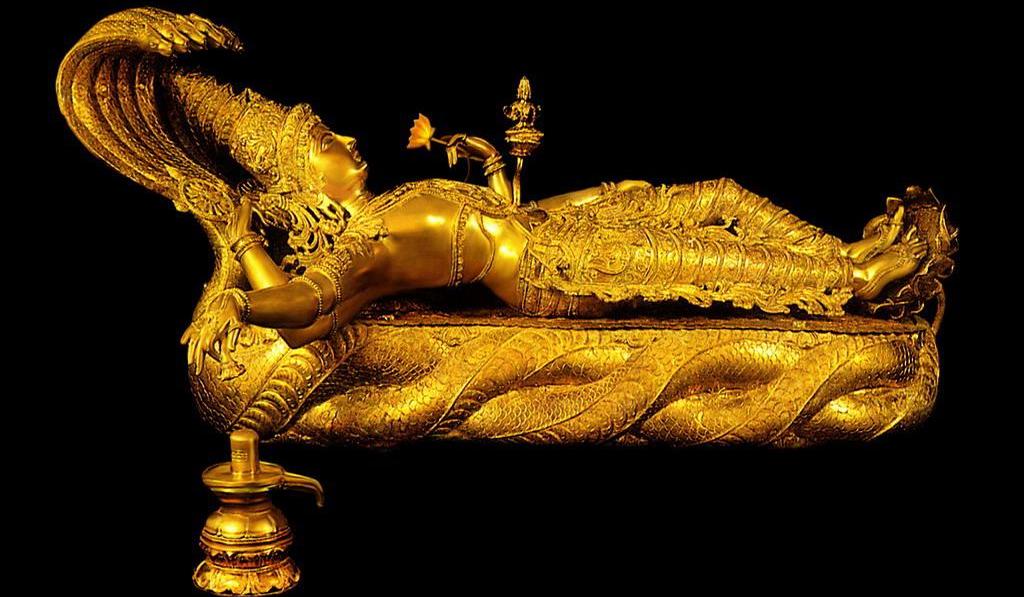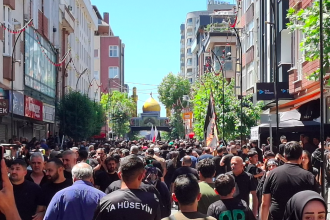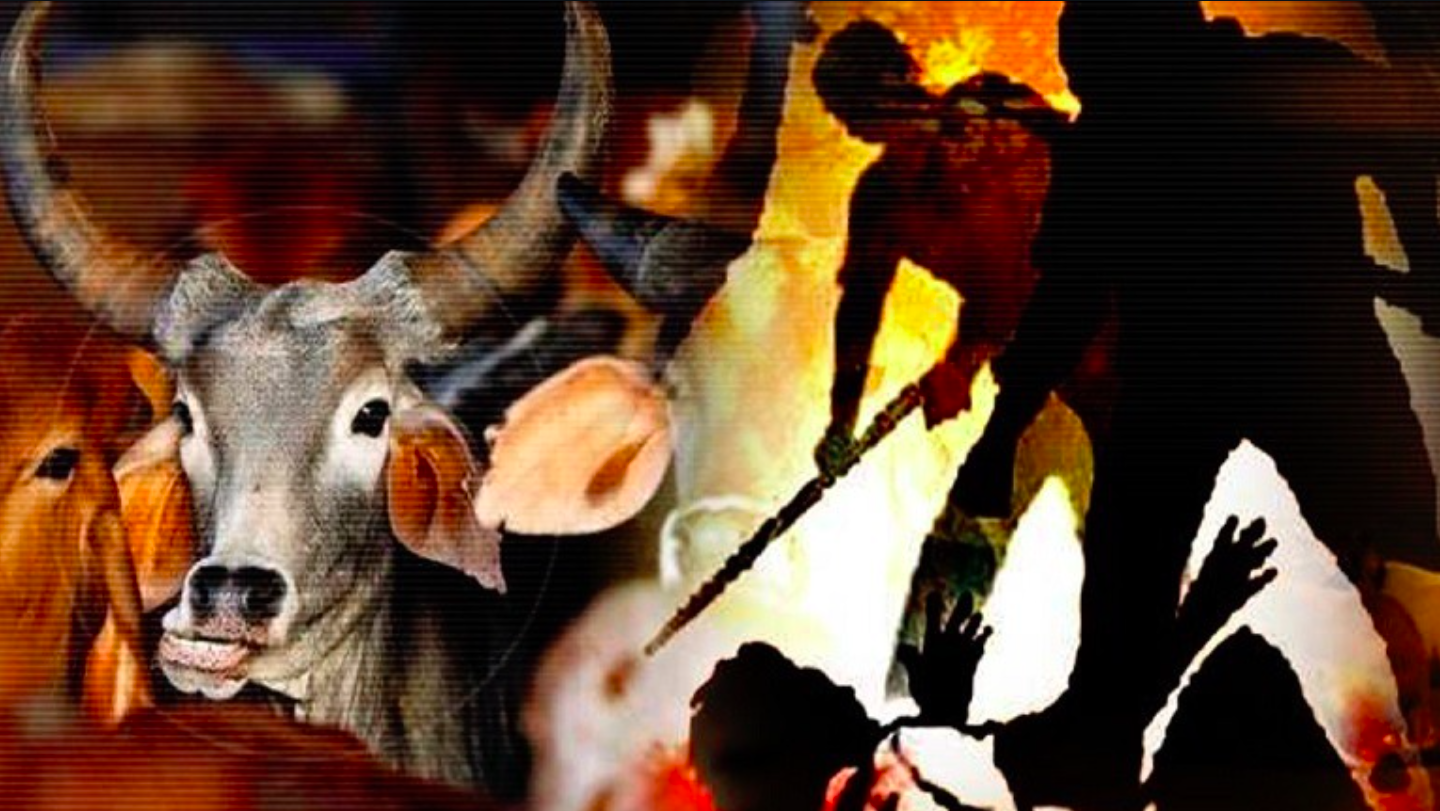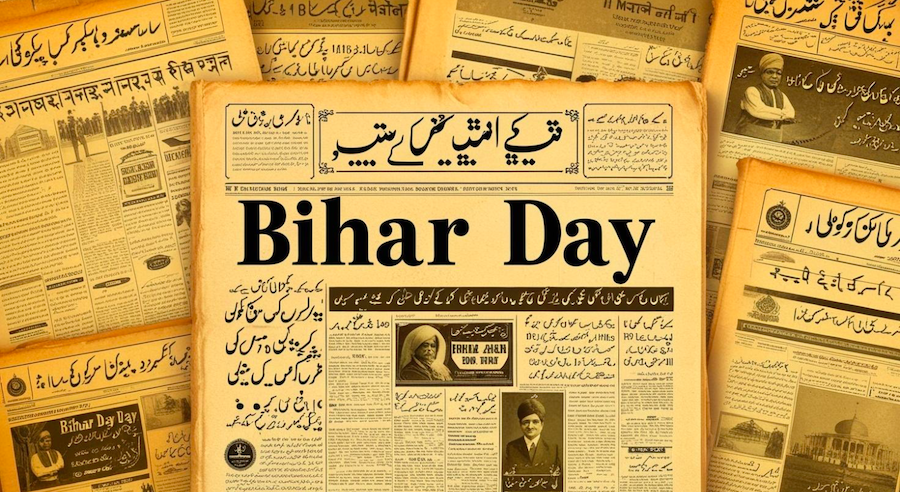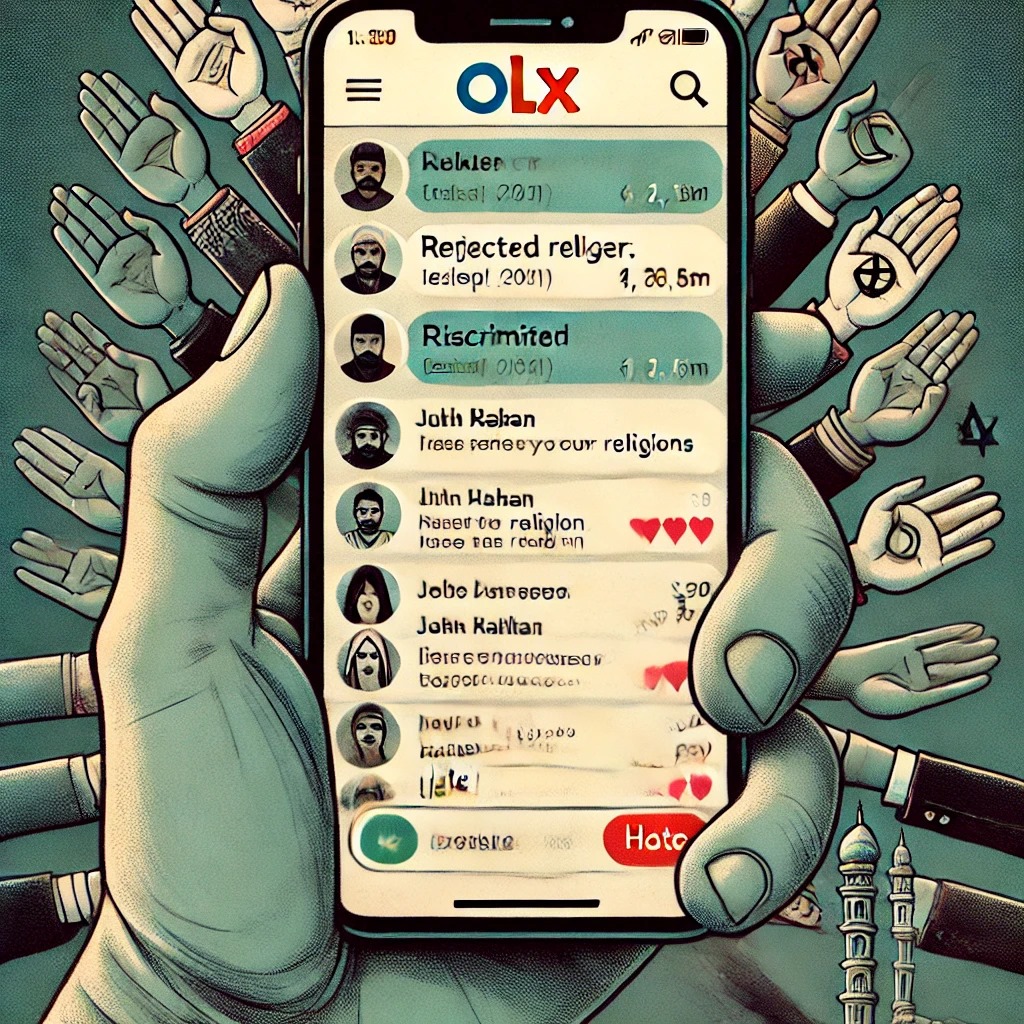Joydeep Hazarika for BeyondHeadlines
When I was a young boy, I would often listen to stories of the various avatars (incarnations) that Lord Vishnu had assumed over the ages to protect mankind from various perils. And I still remember how my overtly religious grandmother would tell us the stories in her own enthusiastic way so that someday we would grow up to be devout young Hindus. The ten avatars of Vishnu have always been an obsession with me. And as I grew up, I began to read more materials on them. While approaching them, I began to look for a more modernistic approach for which I always looked for works done by foreigners and contemporary historians, most of whom were Britishers. So by the time I had appeared for my matriculation exams, I had some fairly good materials on the topic and was decently informed on each of the avatars. But it was always the last of the avatars i.e. Kalki which intrigued me the most. Kalki, as we know it, is yet to come and he is supposed to be the one who will cleanse this world from all evils and will end this Kali Yug (Dark Age) and usher in the Satya Yug (Age of Truth).
Reflecting on Kalki forces me to reflect on the other nine avatars as well. Historically, none of these avatars can be proven to exist, except for Buddha. It is all but a game-play of faith and devotion. But what is more important for me is the way each of these avatars has been shaped up in the annals of Hindu mythology. Here we have some avatars which seem to be pure works of imagery and fiction while there are others which seem to have got lost in the dust of ancient history. The only avatar which has historical relevance is the ninth one i.e. Lord Buddha. But Buddha’s elevation to the position of an avatar of Vishnu seems to be a rather political step taken by the Hindu priestly class in a bygone era, rather than any genuine religious concerns.
When I look back at avatars like Matsya (the giant fish), Kurma (the tortoise), Varaha (the wild boar) and Narasimha (the half man-half lion); I have no option but to discard them as results of fanciful imaginations. All these avatars mentioned here are short-termed ones and have a rather abrupt ending. Matsya’s relevance is only on a particular point because it comes at a stage where the Hindu scriptures speak of a great flood or deluge akin to the one mentioned in the Old Testaments of the Bible. But obviously we, as rational human beings, cannot accept that a giant fish saved the world from a great deluge! The avatar of Kurma also has a similar story where it is taken up to save the world. The avatars of Varaha and Narasimha were taken in two different instances to kill demons. Even the avatar of the Bamun (the short heighted Brahmin) was only for a few moments taken to subdue the pride of a demon king who was out to conquer the world. Bamun’s avatar seems to me a classic case where the Brahmin class tried to assert their dominance by showing that the first human avatar that Vishnu took after assuming earlier animistic forms was that of a high class Brahmin.
All the avatars mentioned so far were the earliest ones and all of them were adopted for a very short while. Also, they were taken only on special occasions. Varaha is the only one among them which makes an appearance more than once. It is rather interesting that Mohini, which is a female form of Vishnu, is not regarded as an avatar although she makes quite a few appearances in Hindu mythology. She plays an important role in the episode of the churning of the ocean, she and Shiva have a son named Ayappa in local South Indian legends; and also she makes an appearance in the Aravan episode of the Mahabharata. Then why is she not in the list of the avatars? Maybe the concept of a female avatar by a male god wasn’t appealing enough for the priestly class of that era. This is a classic instance for me where sexism played a huge part in the non-elevation of a potential avatarial candidate. For me, Mohini surely deserves a place among the avatars of Vishnu if the other short-termed ones mentioned above are to be regarded as avatars. I hope all my feminist friends take a note of this.
After these avatars, the rest which came to being all have proper lifespans and a proper story to be told. Although they betray every historical fact imaginable, they do help us in understanding the philosophy and the patterns of society formations of the early Vedic period. These avatars also come in a particular era from where events and places mentioned in their stories have some historical relevance. The two great epics – the Ramayana and the Mahabharata –help us a great deal in chronicling the era and we also have a decent amount of information from that period thanks to the various archaeological findings. So I was greatly overjoyed when I first heard the news that Krishna’s Dwarka city had been discovered off the coast of Gujarat years ago. But obviously controversies and debates continue to haunt them. Krishna’s Dwarka is still under a lot of scrutiny as to its authenticity. Rama’s birthplace Ayodhya has been claimed up by as many as five different places, including one in Afghanistan. And one of these Ayodhyas led to the biggest communal carnage in independent India that our generation was unfortunate enough to witness.
Among these later avatars that have a more stable lifespan then their previous counterparts, Parashuram has got to be the most violent one. Right from the act where he chops off his mother’s head at the behest of his father to the later parts where he single-handedly carries out a mass murder program to kill every single Kshatriya on earth, Parashuram’s story is full of violence and bloodshed. Also if we analyze carefully, Parashuram is also perhaps the only avatar which is more human in its behaviour and outlook. Perhaps this avatar also shows how we humans, in our want for revenge and justice, throw away all logic to the winds and indulge in mindless violence that sucks the innocents in it as well. This imperfection is one important feature of the character of Parashuram which is not seen in the other avatars that are derived to be as perfect as the God who resides in them. It is one instance where even God, in the form of a human, becomes imperfect like him and commits acts of mass violence. Also Parashuram’s story gives us a picture of the first instances of caste violence, or to be more precise the rising of a person against a particular class in early Vedic times.
After Parashuram comes Rama, the hero of the great Indian epic – the Ramayana. Rama is shown to be the embodiment of everything perfect. He is shown to be the perfect son, husband, brother, etc. Rama’s birth is taken primarily to kill the demon King Ravana, the ruler of Lanka. The Ramayana is a perfect example of the early struggle between the Aryans and the non-Aryans in India. The Aryans in this period were in an expansionist phase and were contending for power with the non-Aryans who were holding their grounds. Rama, for me, must have been a great warrior of that age who had won great victories against the non-Aryans which probably resulted in his position being elevated to that of an avatar. His greatest victory must have been against Ravana which is the crux of the Ramayana. But then again, I have serious problems with the way Rama treated his wife Sita after killing Ravana, when he made her go through the Agnipariksha; and also for the next time when he banished her to the forest after he became the king. Here we find that Rama is not a perfect character and he has to live up to the public image that he has built around himself. So even if Rama is considered to be a perfect character, he is in all practical sense, imperfect. So Rama in simple terms was a victim of image branding!
Next in line is Krishna. Krishna is a cunning, witty and extremely successful politician. Also when we read about this exploits in the Mahabharata, it becomes clear that he is an unparalleled master of jurisprudence. The way he leads the Pandavas to victory in the Kurukshetra War only shows his mastery in the fields of politics and strategy planning. Krishna’s forte lies in the fact that through the medium of logic and arguments, he converted most acts of cheating and treachery into acts of wisdom and common sense. For him victory was more important than upholding ethics in the battlefield. Krishna’s famous sermon to Arjuna which becomes the revered Bhagwad Gita, is a perfect example of how he treats duty above all ties and relations. And this simple philosophy is the pillar of strength behind all of Krishna’s politics and strategies. Krishna’s cunning ways make him more close to our dear politicians of today. Surely, it is no wonder that a character with such a successful career in politics was elevated to the position of an avatar.
Now when we come to the ninth avatar i.e. Lord Buddha, we must realize that the scene in the Indian history had undergone a change. The Vedic period of the Ramayana and the Mahabharata had ended and now had come the age of the Mahajanapadas, which were the first great kingdoms to be recorded in the annals of Indian history. Buddha’s period coincided with a very important phase of history. This was the time when kingdoms like Magadha, Kosala and Kashi were vying with each other for political supremacy in Northern India. This was also the period where history actually began to be recorded in India. And in the midst of this came Buddha, himself a royal, with the message of peace and non-violence. Buddha’s attempts, to me, were neither to form a new religion nor to claim godhood. His prime motive was to start a reformatory movement within Hinduism which had then become too complicated for the common masses. This reformatory movement which eventually evolved into a separate religion i.e. Buddhism, gave a jolt to the Hindu priestly classes when they saw the huge conversion to Buddhism as a potential threat to the very existence of Hinduism. It seemed but only a very appropriate step to declare Buddha as the ninth avatar of Vishnu. This was a strategic move as far as religion is concerned. It definitely served as a counter step to the conversions to Buddhism. Also by including Buddha in the Hindu pantheon of avatars, the concept of the ten avatars or incarnations of Vishnu drew to a prefect closing phase. Also, Buddha’s close relations with Kings like Prasenjit and Bimbisara was a big factor for his consideration as an avatar.
The question which now arises is that who is going to be the last avatar of Vishnu i.e. Kalki? What will be the considerations that will work to the forming of the Kalki avatar? Priests have over the ages given various premonitions of Kalki. The most obvious being that he will be born in a Brahmin family (again the Brahmin dominance!) and that he will usher in the new age of Satya Yug (Age of Truth). So far after analyzing all the avatars, one can wonder as to what it would take to find a Kalki from amongst us! So when will this Kalki come? Should we wait for him? Or is it that he has already taken birth and is waiting for his right time to come forth? My view on this is that I will not wait for any Kalki! The way the previous avatars were selected clearly reveals that only a hero from among us will be elevated to the post of Kalki. The later avatars like Rama, Krishna and Buddha were given the status of avatars as late as the Gupta period. So most probably, in the future, some desperate priest in an attempt to save the last straw of Hinduism will declare some fairly successful personality to be Kalki, who will obviously fit the bill of the avatar.
What I am trying to say here is that there is no point in waiting for Kalki. We should all strive to be what we expect of a Kalki to do for us. For the truth is that until and unless we ourselves do something to improve the situation of the world we live in, nobody will come to save us. Who knows? Kalki maybe none but one among us! Or maybe Kalki is just a metaphor. And we all need to look for a Kalki in ourselves.
(Joydeep is a media professional from Assam, working in New Delhi. He can be reached at joydeep1985@gmail.com and you can follow him on twitter @joydeep1985.)

